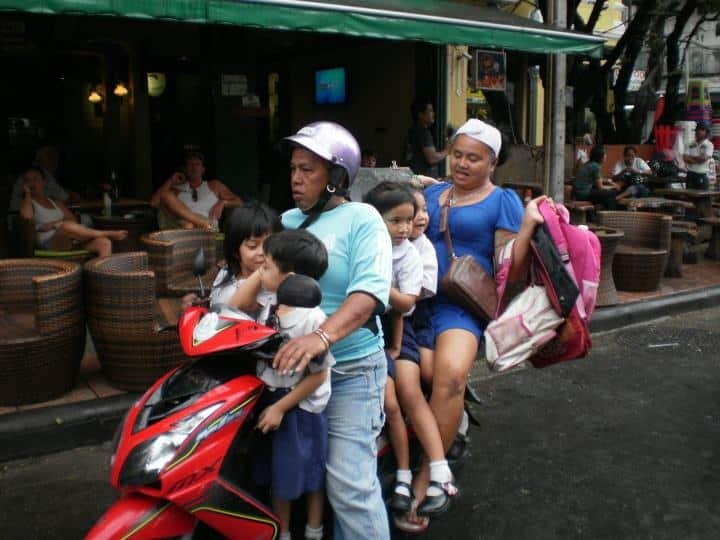Driving in Thailand by Car or Motorcycle

Motorcycles, or scooters are everywhere. Far more of these small buzzing things than there are cars and trucks. When driving in Thailand, you must be looking in all directions all the time in order to avoid crushing one. Thai drivers drive with the assumption that you will avoid them because you don’t want the hassle of crashing your car. Oh, and anytime there is an accident between a foreigner and a Thai person, it is always the foreigner’s fault, regardless of the circumstances.
There are a few key things a farang should know about driving in Thailand
- In Thailand, traffic drives on the left side of the road, and the steering wheel in the car is on the right side.

- If you have an International driver’s license, you will experience less problems when dealing with the police. If you plan to stay in Thailand for more than 90 days, you need to get a Thai driver’s license.
- Most car rental and motorbike rental places will rent to anyone with a passport. They will not require a driver’s license or an international driver’s license. DO NOT leave your actual passport with them, leave a copy, if they will not accept a copy of your passport, move on to another company.
- Police check points are very common, but are usually not found in larger cities like Pattaya or Bangkok due to the amount of traffic. However, when driving through the country, most all smaller towns will have at least one police check point. Police check points are usually looking for people driving without a license. If you are driving without an International license, expect to pay a fine each time you are stopped.
- Police look for cars being driven by farang, they know they are good for some fast cash.
- Somehow, they know if you were speeding sometime before you reach the check point. I was stopped once, and I was informed that I was driving 120Km/Hr and had to pay a 200 Baht fine. It was true, but I had slowed to the 90Km/Hr speed limit long before the check point.
- Keep a several 100 Baht bills with you when driving, every time I was stopped (5 times in one day) I was let go after I offered 200 Baht to the officer to buy him a drink or dinner. Bribing the officers is expected, is done by everyone.
- Speed limits vary from road to road, some roadways have different speed limits depending on what type of vehicle you are driving. The speed limit signs are not as obvious as you see in other countries, generally it is a small round sign with a number, like 90, with a red circle around it.
- On multi lane roads, always drive in the left most lane unless you are passing another vehicle.
- Always look both ways when entering a road. Traffic will come both directions, even on the wrong side of the road. If you get into an accident, it will be your fault, farang are always at fault in an accident, even if it was not and even if a police officer witnessed the accident.
- Lines painted on the road are there to meet international requirements. However, rarely are the lanes used. Frequently a road with 2 painted lanes will have 3 or 4 lanes of actual traffic.
- Relax, you’ll see crazy things on the roads, just breath deep, relax, and go with the flow. Most Thai drivers never attended a driver’s training course, many cannot pass the driving test and instead bought the passing grade. Expect the unexpected, never assume they will follow the rules of the road.








